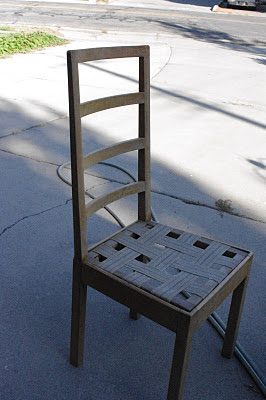
Last weekend was a long weekend for me and I enjoyed lazing around on Saturday morning, including some time watching America's Test Kitchen. I love that show. They tell you why you should or should not do something in a recipe and everything they make is always super delicious looking. The episode was on making multi-grain bread, and they showed examples of breads that may be super nutritious, but they are so heavy and dense that they aren't very tasty. That is exactly what I have thought about healthy bread recipes I've made in the past, but this one looked so yummy, that I knew I had to try it out. I waited all week to try it (because I know that I shouldn't start a recipe that takes 3-4 hours when I get home from work).
The surprise ingredient in this recipe is hot 7-grain breakfast cereal. What genius, since a bag of cereal is less than $3 and I don't end up with bags of grains that I'd never use up. It turned out so great! It took longer for the dough to raise than the recipe suggested, but it was probably because my house wasn't super warm. The bread turned out so light and with good "chew". You could make a really great sandwich with this bread and have it not fall apart (like home made wheat bread sometimes can). I followed the recipe exactly, including the checking the bread's temp before removing from the oven. I even managed to wait 2 hours before I cut into it (torture).
Recipe from America's Test Kitchen
Ingredients
- 1 1/4 C . 7-grain hot cereal mix (I used Bob's Red Mill brand)
- 2 1/2 C. boiling water
- 3 C. all-purpose flour, plus extra for dusting work surface
- 1 1/2 C. whole wheat flour
- 4 T honey
- 4 T unsalted butter , melted and cooled slightly
- 2 1/2 tsp instant yeast
- 1 T table salt
- 3/4 cup pumpkin seeds or sunflower seeds, (unsalted-I did not add these, I don't like seeds in my bread)
- 1/2 cup old-fashioned rolled oats or quick oats
Instructions
- 1. Place cereal mix in bowl of standing mixer and pour boiling water over it; let stand, stirring occasionally, until mixture cools to 100 degrees and resembles thick porridge, about 1 hour. Whisk flours in separate medium bowl.

- 2. Once grain mixture has cooled, add honey, melted butter, and yeast and stir to combine. Attach bowl to standing mixer fitted with dough hook. With mixer running on low speed, add flours, 1/2 cup at a time, and knead until dough forms ball, 1 1/2 to 2 minutes; cover bowl with plastic and let dough rest 20 minutes. Add salt and knead on medium-low speed until dough clears sides of bowl, 3 to 4 minutes (if it does not clear sides, add 2 to 3 tablespoons additional all-purpose flour and continue mixing); continue to knead dough for 5 more minutes. Add seeds and knead for another 15 seconds. Transfer dough to floured work surface and knead by hand until seeds are dispersed evenly and dough forms smooth, taut ball. Place dough into greased container with 4-quart capacity; cover with plastic wrap and allow to rise until doubled, 45 to 60 minutes.


- 3. Adjust oven rack to middle position; heat oven to 375 degrees. Spray two 9 by 5-inch loaf pans with nonstick cooking spray. Transfer dough to lightly floured work surface and pat into 12 by 9-inch rectangle; cut dough in half crosswise with knife or bench scraper. Shape each piece into a loaf by rolling it up; roll to coat with oats; cover lightly with plastic wrap and let rise until almost doubled in size, 30 to 40 minutes. (Dough should barely spring back when poked with knuckle.) Bake until internal temperature registers 200 degrees on instant-read thermometer, 35 to 40 minutes. Remove loaves from pans and cool on wire rack before slicing, about 3 hours.







